#ttrpg jargon explanation
Explore tagged Tumblr posts
Text
D.A.F.T. ttrpg magazine issue 2
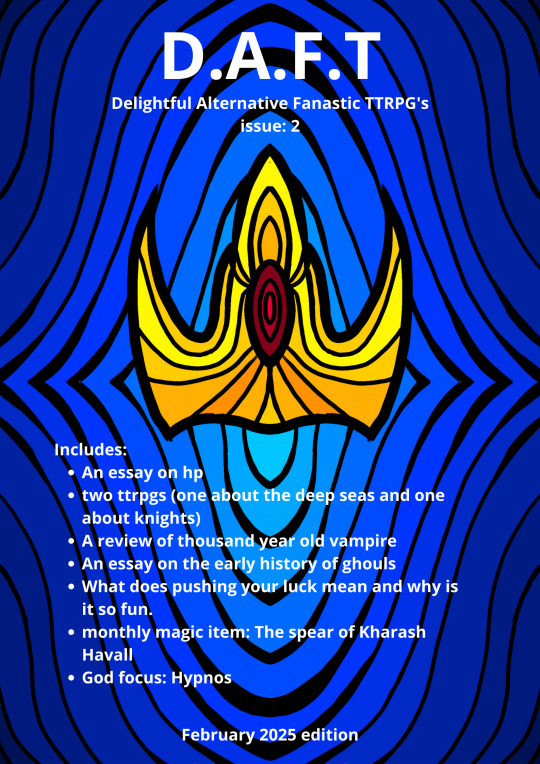
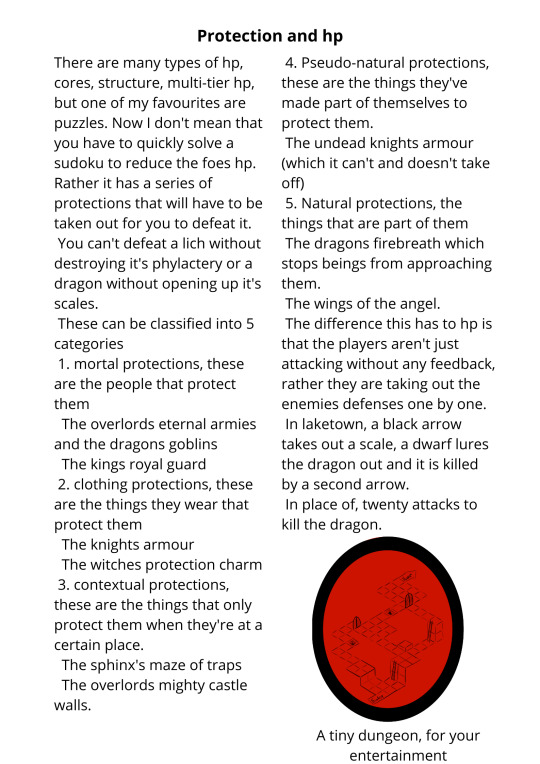
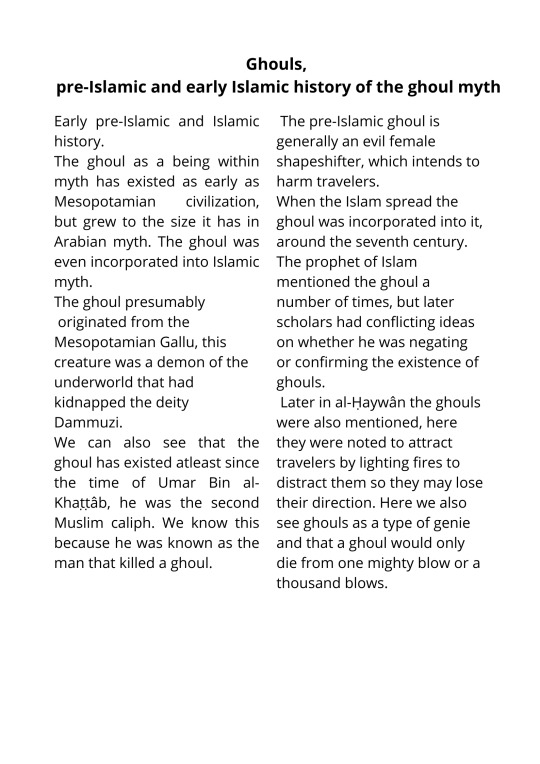

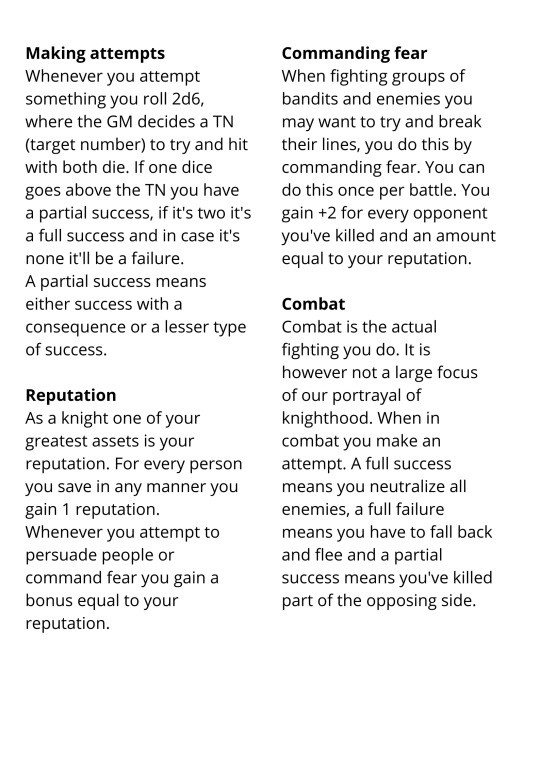

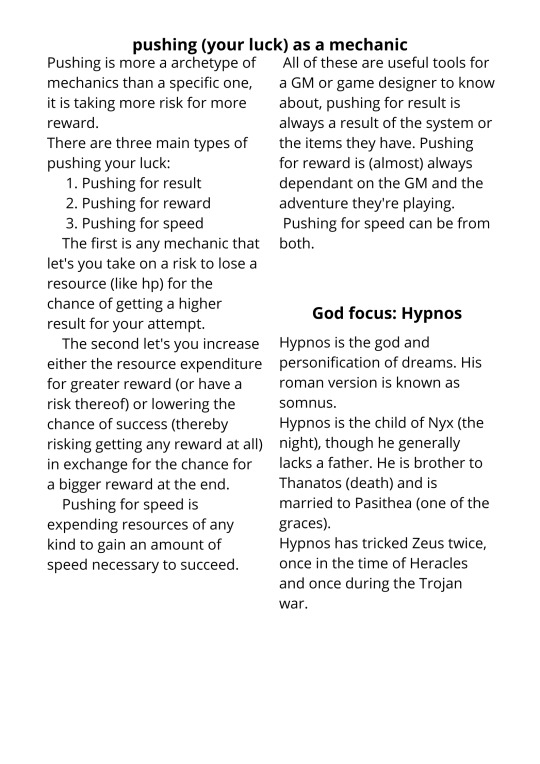
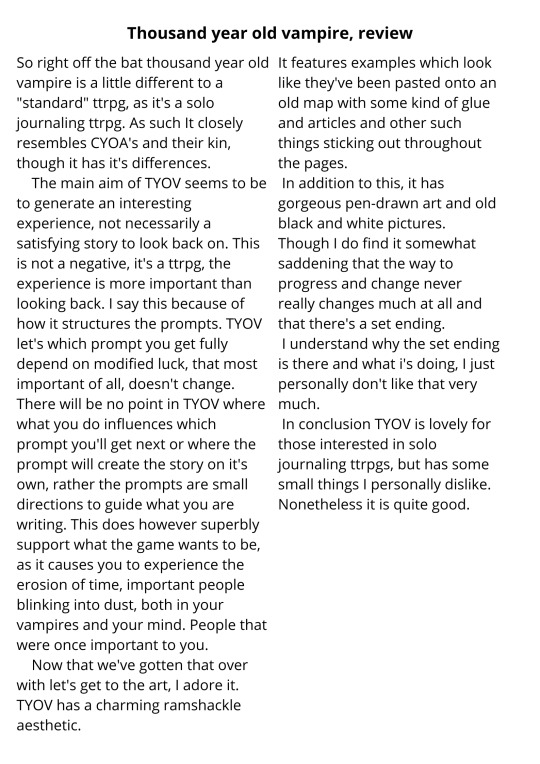
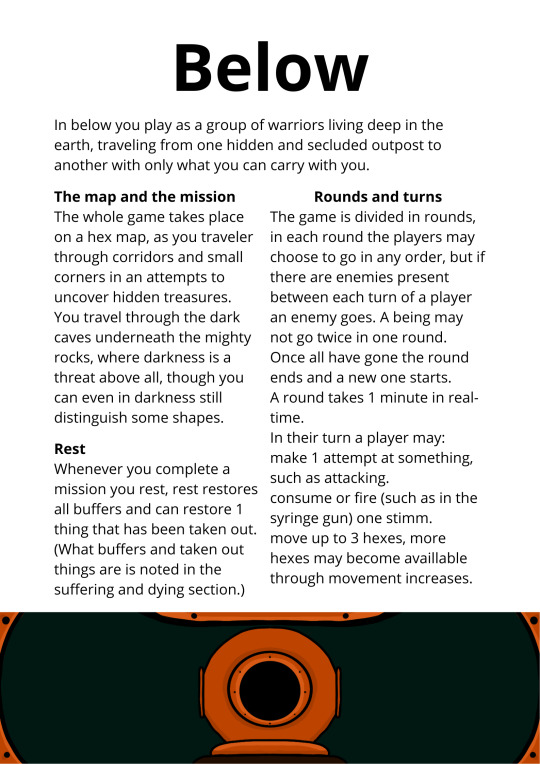
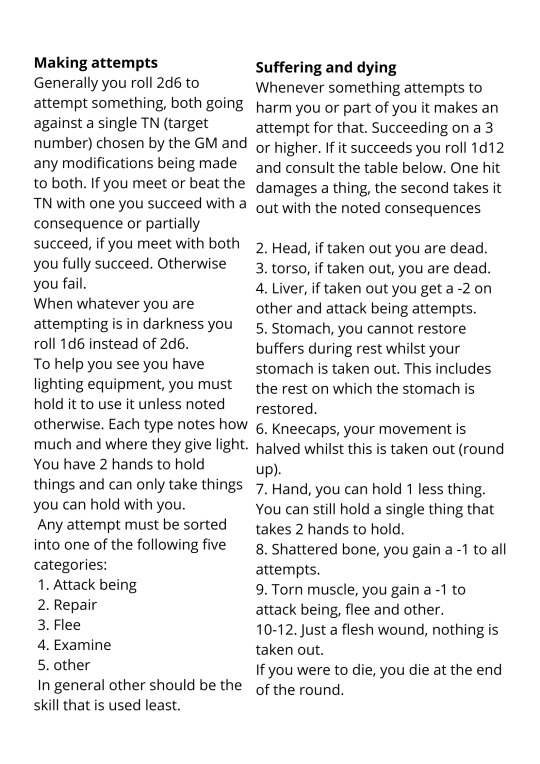
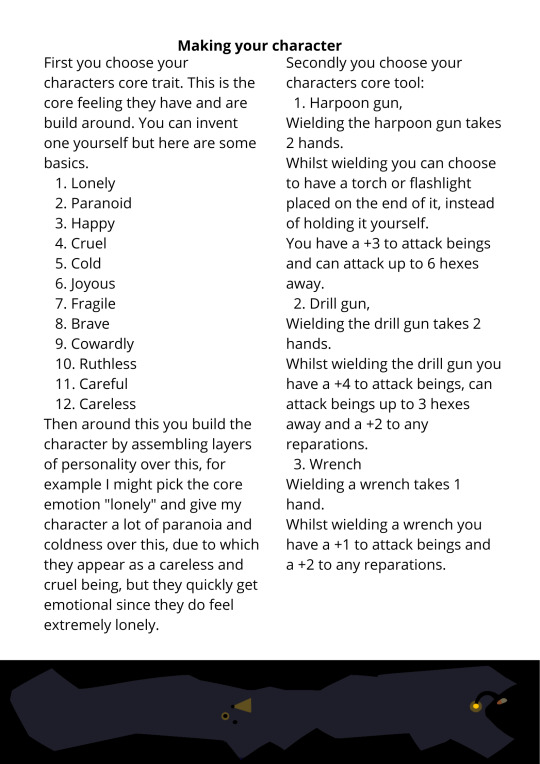
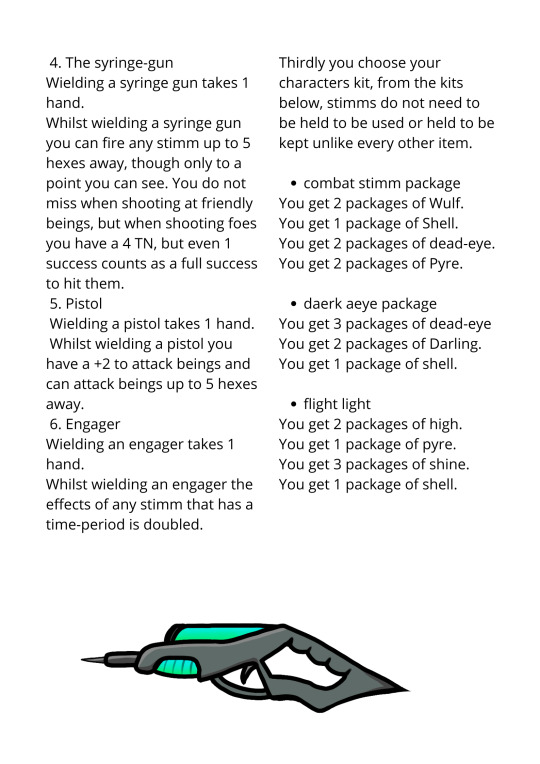
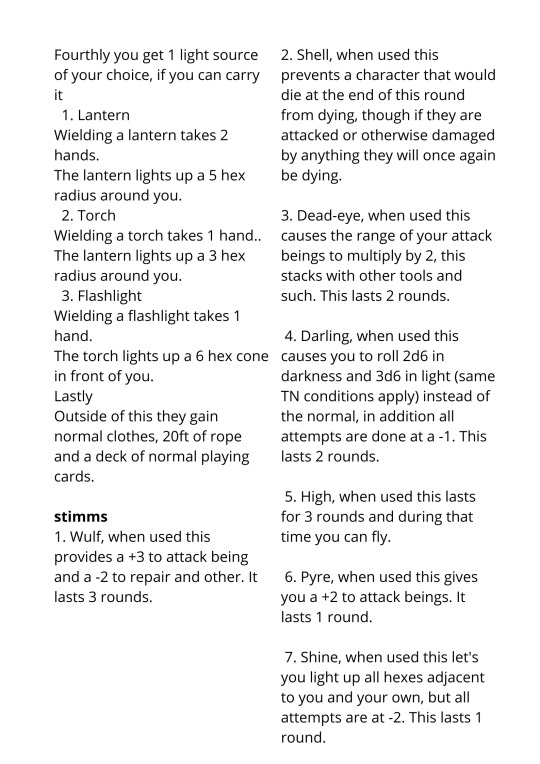
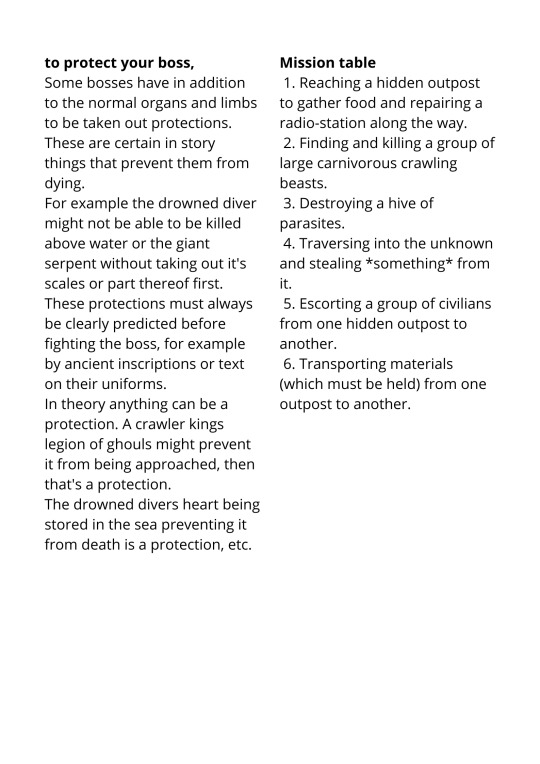

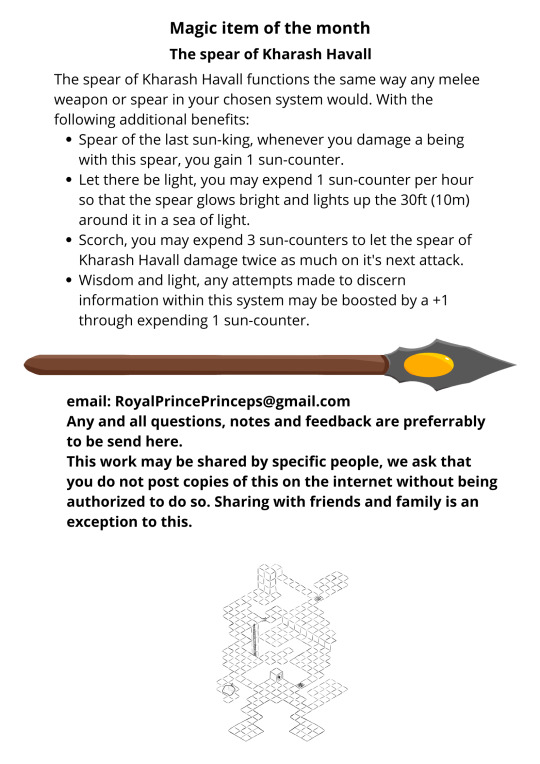
#ttrpg design#ttrpg#ttrpg jargon explanation#tabletop roleplaying game#ttrpg magazine#magazine#zine#issue 2 of D.A.F.T.
5 notes
·
View notes
Text
a visit to the house of the robot priests
there are a lot things written about LLMs, many of them dubious. some are interesting tho. since my brain has apparently decided that it wants to know what the deal is, here's some stuff i've been reading.
most of these are pretty old (in present-day AI research time) because I didn't really want to touch this tech for the last couple of years. other people weren't so reticent and drew their own conclusions.
wolfram on transformers (2023)
stephen wolfram's explanation of transformer architecture from 2023 is very good, and he manages to keep the usual self-promotional "i am stephen wolfram, the cleverest boy" stuff to a manageable level. (tho to be fair on the guy, i think his research into cellular automata as models for physics is genuinely very interesting, and probably worth digging into further at some point, even if just to give some interesting analogies between things.) along with 3blue1brown, I feel like this is one of the best places to get an accessible overview of how these machines work and what the jargon means.
the next couple articles that were kindly sent to me by @voyantvoid as a result of my toying around with LLMs recently. they're taking me back to LessWrong. here we go again...
simulators (2022)
this long article 'simulators' for the 'alignment forum' (a lesswrong offshoot) from 2022 by someone called janus - a kind of passionate AI mystic who runs the website generative.ink - suffers a fair bit from having big yud as one of its main interlocutors, but in the process of pushing back on rat received wisdom it does say some interesting things about how these machines work (conceiving of the language model as something like the 'laws of motion' in which various character-states might evolve). notably it has a pretty systematic overview of previous narratives about the roles AI might play, and the way the current generation of language models is distinct from them.
just, you know, it's lesswrong, I feel like a demon linking it here. don't get lost in the sauce.
the author, janus, evidently has some real experience fiddling with these systems and exploring the space of behaviour, and be in dialogue with other people who are equally engaged. indeed, janus and friends seem to have developed a game of creating gardens of language models interacting with each other, largely for poetic/play purposes. when you get used to the banal chatgpt-voice, it's cool to see that the models have a territory that gets kinda freaky with it.
the general vibe is a bit like 'empty spaces', but rather than being a sort of community writing prompt, they're probing the AIs and setting them off against each other to elicit reactions that fit a particular vibe.
the generally aesthetically-oriented aspect of this micro-subculture seems to be a bit of a point of contention from the broader lesswrong milieu; if I may paraphrase, here janus responds to a challenge by arguing that they are developing essentially an intuitive sense for these systems' behaviour through playing with them a lot, and thereby essentially developing a personal idiolect of jargon and metaphors to describe these experiences. I honestly respect this - it brings to mind the stuff I've been on lately about play and ritual in relation to TTRPGs, and the experience of graphics programming as shaping my relationship to the real world and what I appreciate in it. as I said there, computers are for playing with. I am increasingly fixating on 'play' as a kind of central concept of what's important to me. I really should hurry up and read wittgenstein.
thinking on this, I feel like perceiving LLMs, emotionally speaking, as eager roleplayers made them feel a lot more palatable to me and led to this investigation. this relates to the analogy between 'scratchpad' reasoning about how to interact socially generated by recent LLMs like DeepSeek R1, and an autistic way of interacting with people. I think it's very easy to go way too far with this anthropomorphism, so I'm wary of it - especially since I know these systems are designed (rather: finetuned) to have an affect that is charming, friendly and human-like in order to be appealing products. even so, the fact that they exhibit this behaviour is notable.
three layer model
a later evolution of this attempt to philosophically break down LLMs comes from Jan Kulveit's three-layer model of types of responses an LLM can give (its rote trained responses, its more subtle and flexible character-roleplay, and the underlying statistics model). Kulveit raises the kind of map-territory issues this induces, just as human conceptions of our own thinking tend to shape the way we act in the future.
I think this is probably more of just a useful sorta phenomological narrative tool for humans than a 'real' representation of the underlying dynamics - similar to the Freudian superego/ego/id, the common 'lizard brain' metaphor and other such onion-like ideas of the brain. it seems more apt to see these as rough categories of behaviour that the system can express in different circumstances. Kulveit is concerned with layers of the system developing self-conception, so we get lines like:
On the other hand - and this is a bit of my pet idea - I believe the Ground Layer itself can become more situationally aware and reflective, through noticing its presence in its sensory inputs. The resulting awareness and implicit drive to change the world would be significantly less understandable than the Character level. If you want to get a more visceral feel of the otherness, the Ocean from Lem's Solaris comes to mind.
it's a fun science fiction concept, but I am kinda skeptical here about the distinction between 'Ground Layer' and 'Character Layer' being more than approximate description of the different aspects of the model's behaviour.
at the same time, as with all attempts to explore a complicated problem and find the right metaphors, it's absolutely useful to make an attempt and then interrogate how well it works. so I respect the attempt. since I was recently reading about early thermodynamics research, it reminds me of the period in the late 18th and early 19th century where we were putting together a lot of partial glimpses of the idea of energy, the behaviour of gases, etc., but had yet to fully put it together into the elegant formalisms we take for granted now.
of course, psychology has been trying this sort of narrative-based approach to understanding humans for a lot longer, producing a bewildering array of models and categorisation schemes for the way humans think. it remains to be seen if the much greater manipulability of LLMs - c.f. interpretability research - lets us get further.
oh hey it's that guy
tumblr's own rob nostalgebraist, known for running a very popular personalised GPT-2-based bot account on here, speculated on LW on the limits of LLMs and the ways they fail back in 2021. although he seems unsatisfied with the post, there's a lot in here that's very interesting. I haven't fully digested it all, and tbh it's probably one to come back to later.
the Nature paper
while I was writing this post, @cherrvak dropped by my inbox with some interesting discussion, and drew my attention to a paper in Nature on the subject of LLMs and the roleplaying metaphor. as you'd expect from Nature, it's written with a lot of clarity; apparently there is some controversy over whether it built on the ideas of the Cyborgism group (Janus and co.) without attribution, since it follows a very similar account of a 'multiverse' of superposed possible characters and the AI as a 'simulator' (though in fact it does in fact cite Janus's Simulation post... is this the first time LessWrong gets cited in Nature? what a world we've ended up in).
still, it's honestly a pretty good summary of this group's ideas. the paper's thought experiment of an LLM playing "20 questions" and determining what answer to give at the end, based on the path taken, is particularly succinct and insightful for explaining this 'superposition' concept.
accordingly, they cover, in clear language, a lot of the ideas we've discussed above - the 'simulator' of the underlying probabilistic model set up to produce a chain token by token, the 'simulacrum' models it acts out, etc. etc.
one interesting passage concerns the use of first-person pronouns by the model, emphasising that even if it expresses a desire for self-preservation in the voice of a character it is roleplaying, this is essentially hollow; the system as a whole is not wrong when it says that it does not actually have any desires. i think this is something of the crux of why LLMs fuck with our intuitions so much. you can't accurately say that an LLM is 'just telling you what (it thinks) you want to hear', because it has no internal model of you and your wants in the way that we're familiar with. however, it will extrapolate a narrative given to it, and potentially converge into roleplaying a character who's trying to flatter you in this way.
how far does an LLM take into account your likely reaction?
in theory, an LLM could easily continue both sides of the conversation, instead of having a special token that signals to the controlling software to hand input back to the user.
it's unclear whether it performs prediction of your likely responses and then reasons off that. the 'scratchpad' reasoning generated by deepseek-r1 (a sort of hacky way to get a feedback loop on its own output, that lets the LLM do more complex computation) involves fairly explicit discussion of the likely effects of certain language choices. for example, when I asked why it always seems to begin its chain of thought with 'alright', the resulting chain of thought included:
Next, explaining that "Alright" is part of my training helps them understand that it's a deliberate choice in my design. It's meant to make interactions feel more natural and conversational. People appreciate when communication feels human-like, so this explanation helps build trust and connection. I should also mention that it's a way to set the tone for engagement. Starting with "Alright" makes me sound approachable and ready to help, which is great for user experience. It subtly signals that we're entering a conversational space where they can ask questions or share thoughts freely.
however, I haven't personally yet seen it generate responses along the lines of "if I do x, the user would probably (...). I would rather that they (...). instead, I should (...)". there is a lot of concern getting passed around LessWrong about this sort of deceptive reasoning, and that seems to cross over into the actual people running these machines. for example OpenAI (a company more or less run by people who are pretty deep in the LW-influenced sauce) managed to entice a model to generate a chain of thought in which it concluded it should attempt to mess with its retraining process. they interpreted it as the model being willing to 'fake' its 'alignment'.
while it's likely possible to push the model to generate this kind of reasoning with a suitable prompt (I should try it), I remain pretty skeptical that in general it is producing this kind of 'if I do x then y' reasoning.
on Markov chains
a friend of mine dismissively referred to LLMs as basically Markov chains, and in a sense, she's right: because they have a graph of states, and transfer between states with certain probabilities, that is what a Markov chain is. however, it's doing something far more complex than simple ngram-based prediction based on the last few words!
for the 'Markov chain' description to be correct, we need a node in the graph for every single possible string of tokens that fits within the context window (or at least, for every possible internal state of the LLM when it generates tokens), and also considerable computation is required in order to generate the probabilities. I feel like that computation, which compresses, interpolates and extrapolates the patterns in the input data to guess what the probability would be for novel input, is kind of the interesting part here.
gwern
a few names show up all over this field. one of them is Gwern Branwen. this person has been active on LW and various adjacent websites such as Reddit and Hacker News at least as far back as around 2014, when david gerard was still into LW and wrote them some music. my general impression is of a widely read and very energetic nerd. I don't know how they have so much time to write all this.
there is probably a lot to say about gwern but I am wary of interacting too much because I get that internal feeling about being led up the garden path into someone's intense ideology. nevertheless! I am envious, as I believe I may have said previously, of how much shit they've accumulated on their website, and the cool hover-for-context javascript gimmick which makes the thing even more of a rabbit hole. they have information on a lot of things, including art shit - hell they've got anime reviews. usually this is the kind of website I'd go totally gaga for.
but what I find deeply offputting about Gwern is they have this bizarre drive to just occasionally go into what I can only describe as eugenicist mode. like when they pull out the evopsych true believer angle, or random statistics about mental illness and "life outcomes". this is generally stated without much rhetoric, just casually dropped in here and there. this preoccupation is combined with a strangely acerbic, matter of fact tone across much of the site which sits at odds with the playful material that seems to interest them.
for example, they have a tag page on their site about psychedelics that is largely a list of research papers presented without comment. what does Gwern think of LSD - are they as negative as they are about dreams? what theme am I to take from these papers?
anyway, I ended up on there because the course of my reading took me to this short story. i don't think tells me much about anything related to AI besides gwern's worldview and what they're worried about (a classic post-cyberpunk scenario of 'AI breaking out of containment'), but it is impressive in its density of references to interesting research and internet stuff, complete with impressively thorough citations for concepts briefly alluded to in the course of the story.
to repeat a cliché, scifi is about the present, not the future. the present has a lot of crazy shit going on in it!apparently me and gwern are interested in a lot of the same things, but we respond to very different things in it.
why
I went out to research AI, but it seems I am ending up researching the commenters-about-AI.
I think you might notice that some of the characters who appear in this story are like... weirdos, right? whatever any one person's interest is, they're all kind of intense about it. and that's kind of what draws me to them! sometimes I will run into someone online who I can't easily pigeonhole into a familiar category, perhaps because they're expressing an ideology I've never seen before. I will often end up scrolling down their writing for a while trying to figure out what their deal is. in keeping with all this discussion of thought in large part involving a prediction-sensory feedback loop, usually what gets me is that I find this person surprising: I've never met anyone like this. they're interesting, because they force me to come up with a new category and expand my model of the world. but sooner or later I get that category and I figure out, say, 'ok, this person is just an accelerationist, I know what accelerationists are like'.
and like - I think something similar happened with LLMs recently. I'm not sure what it was specifically - perhaps the combo of getting real introspective on LSD a couple months ago leading me to think a lot about mental representations and communication, as well as finding that I could run them locally and finally getting that 'whoah these things generate way better output than you'd expect' experience that most people already did. one way or another, it bumped my interest in them from 'idle curiosity' to 'what is their deal for real'. plus it like, interacts with recent fascinations with related subjects like roleplaying, and the altered states of mind experienced with e.g. drugs or BDSM.
I don't know where this investigation will lead me. maybe I'll end up playing around more with AI models. I'll always be way behind the furious activity of the actual researchers, but that doesn't matter - it's fun to toy around with stuff for its own interest. the default 'helpful chatbot' behaviour is boring, I want to coax some kind of deeply weird behaviour out of the model.
it sucks so bad that we have invented something so deeply strange and the uses we put it to are generally so banal.
I don't know if I really see a use for them in my art. beyond AI being really bad vibes for most people I'd show my art to, I don't want to deprive myself of the joy of exploration that comes with making my own drawings and films etc.
perhaps the main thing I'm getting out of it is a clarification about what it is I like about things in general. there is a tremendous joy in playing with a complex thing and learning to understand it better.
9 notes
·
View notes
Text
ttrpg jargon explanation #2 gameplay and roleplay
Gameplay and Roleplay are two terms that are thrown around a lot when talking about game design.
Gameplay generally refers to moments created and facilitated by interaction between the player (generally via their character) and the rules. Any interaction between the players and the rules where the player has meaningful choice qualifies as gameplay. In places without choice it's not really gameplay, moreso the mechanics resolving as they will. Examples of gameplay are things like a battle in Lancer, or an investigation in Brindlewood Bay.
Roleplay is any moment that is the expression of a character, for example a noble paladin giving a final speech, but it can be smaller things, like a warrior picking up a flower after a battle.
Notably these two are not mutually exclusive, you can have roleplay and gameplay at the same time and you can have neither of them at moments.
#ttrpg design#ttrpg jargon explanation#ttrpg jargon explanation 2#gameplay and roleplay#ttrpg devving#I might make a longer running smt outta these explanations
5 notes
·
View notes
Text
Ttrpg tutorail #11 fun
Fun, such a basic concept and often lost in the whirlwind that is game-design yet so utterly essential to any game.
Fun here is any form of entertainment, not necessarily laughing and goofing off, a deeply emotional experience is also fun within this definition.
I personally distinguish 2 types of fun
emotional fun
challenge based fun
We'll start with the start with emotional fun, this is fun as a way to experience things like grief, love and loss. This is difficult to implement because ultimately all humans are wired differently on this part. When designing emotional fun the two main priorities are to let them like something and then take it away, which makes them feel uneasy in the short term. For the purpose of this essay not becoming a 200-page essay I'll keep it at that for emotional fun.
Challenge based fun exists between impossibility and triviality and requires knowledge. A player must feel that:
The challenge can be overcome
The challenge cannot be easily overcome
They know the next step to overcome the challenge
The last is the most difficult as the system must be difficult to master (as not to destroy the second pillar) but still transparant enough for them to see how to get better.
Secondly fun must never be secondary to balance, a player will often choose the best option where possible, therefore this best option must be fun to choose. Secondly all choices must be non-trivial, if they can take any but one is vastly better than any other this choice is irrelevant and must be removed or improved.
#ttrpg design#ttrpg development#ttrpg devving#ttrpg#tabletop#tabletop roleplaying game#ttrpg jargon explanation#tabletop tutorial
3 notes
·
View notes
Text
ttrpg tutorials #9 cover
Cover is any obstacle that stops you from either passing through it, attacking (or specifically shooting) through it or both.
In tactical games that include a map, cover is a necessity, making the lad in the bush harder to hit and the lass behind the tree harder to hit.
Now cover can be a lot of things depending on the game, to take two examples (5e and killteam), in 5e cover is rarely relevant, as there's only two types of cover and the lesser type of cover does not matter enough for players to pay attention to it, in contrast with killteam, where cover is the most important thing. Now this effect is not just due to cover, it is also due to damage, the more hits it takes to take someone down, the less likely they are to use cover, as it's just not necessary.
A populair misconception is that melee is effectively useless in high cover games, which is quite untrue. Melee does change with high cover games, as the archetype of the barbarian or such just standing there tanking hits, doesn't fit with high cover. As such melee characters will often be slightly more tanky but more importantly be absolute beasts damage wise, as it means that although it's difficult for them to get to the prey, once they get there they've basically won that fight already.
Now high cover can slow down your game considerably, as it increases the amount of tactical consideration dramatically, how much is something you'll have to playtest.
2 notes
·
View notes
Text
TTRPG Jargon explanation #3 Timmy, Johnny and Spike
These terms originated from the game Magic the Gathering, so they're not always applicable when making a ttrpg, but more on that later. The terms are talking about archetypes within players, but these archetypes are only referring to (combat) mechanics, in addition all players have a measure of all three within them, just in different measures. Timmy, Johnny and Spike are useful when determining who mechanics are for within your game, or even who this pillar of your game is for.
Timmy, Timmy is the "power gamer", he wants to do something big, do big stuff with and smash his enemies. In the context of Magic this means casting big things, or a lot of things and smashing the opponent in a grand victory. Barely pulling out a victory at the end is not for Timmy. Within ttrpgs I believe Timmy to be the player who likes big numbers (or a lot of slightly smaller numbers), Timmy wants a mighty attack that annihilates his foes. Notably fun and socialization are two important parts for the Timmy. The Timmy also cares more about quality of victory than quantity of victory, a single battle grandly won is more important than one or multiple were they barely scraped out a victory.
Johnny, Johnny builds with style and self-expression. The Johnny is a creative gamer to whom building is self-expression and as such to the Johnny will use the game partly to show off their creativity and how they made a unique build. Notably to the Johnny building characters can be more important than playing the game itself. Johnny wants interesting and unique features to build around, he cares to do the thing his build is build to do, rather than win a lot.
Spike, Spike is the more competitive of the player types. The Spike wants to win, without caring much about the quality of the win. Unlike Spike and Johnny who like a particular type of mechanic, Spike will want to use whatever is best.
Now that that's concluded you can see that these are not encompassing nearly everything about the profile of a player, but these are merely assists for making mechanics.
6 notes
·
View notes
Text
Ttrpg jargon explanation/ ttrpg tutorials #8 probability curves and more
A probability curve is the chance of having any single number on a die roll, with 1d6 this is 1/6th for each number. When using multiple dice you get a bell curve, because there are more combinations of numbers that make up some numbers. For example: the 7 is far more probably on 2d6 than the 12, because the 12 can only be made through two sixes, whilst the 7 can be made through: 4 and 3, 3 and 4, 1 and 6, 6 and 1, 2 and 5 and 5 and 2.
This is important to keep in mind when designing ttrpgs as the probability jumps between numbers become higher, when you pla with for example 3d6, going from a TN of 7 to 8 is a far larger change than going from an 11 to 12.
This leads me into the comparison between reliability and high numbers, within your progress system it might be interesting to make seperate options for increasing reliability and increasing the amount you can roll, but when doing so it is important to consider than 2 dice of half the number of a single die has a higher average than the single die. This higher average is due to dice starting at 1 instead of 0.
Oh and I'll probably be renaming this series to ttrpg tutorials
5 notes
·
View notes
Text
Ttrpg jargon explanation #7 Meatgrinders and dungeoncrawlers
Meatgrinders, a meatgrinder is in some ways the equivalent of a soulslike, when done well it is harsh but fair and death is permanent. The goal is to be very careful, touch every tile with a 10ft pole and so on.
Dungeoncrawl, this is a scenario where you're navigating an area (the dungeon, though it doesn't have to be an actual dungeon) and advancing. A good dungeon has atleast the following
combat encounters
resource management
traps and puzzles
roleplay
The combat encounters are obvious, the classic dungeoncrawl will have you battling orcs or elves or such.
Resource management if as if not more essential, this is most clearly manifested in the managing of the amount of torches, food and hp you have. Is it worth it to try and get that loot, with the lowered hp you don't know if you'll be able to beat the x.
Traps are an extension of resource management, they teach the players to consider the risks of collecting and greedily running at loot
Puzzles are generally just a fun challenge that is different to combat.
Roleplay is obviously important, they're named ttrpgs for a reason.
#ttrpg design#ttrpg development#ttrpg devving#ttrpg development glossary#ttrpg jargon explanation 7#ttrpg#dungeoncrawl#meatgrinder
6 notes
·
View notes
Text
Ttrpg jargon explanation #6 diegetic naming and the narrative
So first of all diegetic, diegetic means a thing (generally a sound) that is heard within the media, for example the music for a movie is diegetic if the characters can also hear it.
In the context of ttrpgs this is generally used to order things, because ttrpgs need non-diegetic things (like hp, ac, stats, etc) to function within the game.
The narrative within ttrpgs is generally the framework of the stories, how do the NPC's act. Aside from what the players do. There are terms that are about the narrative, notably:
Railroading or participationism, this is a descriptor for campaigns or games with a lot of campaigns where the players are effectively just looking around and lack true meaningful choice and input.
freeform, this is a descriptor for campaigns or games with a lot of campaigns where the players have all (or almost all) choices and the GM just makes the consequences.
5 notes
·
View notes
Text
Ttrpg jargon explanation #5 Munchkins and Grognards
This one will be a short one (hopefully) since these are just a list of "bad" player types.
Munchkins: A player that tries to make the most powerful type of character, often trying to "win" the ttrpg. Typically associated with younger players.
Murderhobo: A player or group that solves all by mindless violence, without consideration of evil or morality at all.
Rules lawyer: A player with an in-depth knowledge of the game rules, who will attempt to contest the GM on control over rulings and interrupt people.
attention hoarder: A player tries to have a lot of attention on their character, this if controlled is not necessarily negative. The opposite of this is the sit back and watch the story unfold type of player.
old-school gamers: Players, who have often played dnd 3.5 or earlier (dnd) editions and are the dungeon-exploring kind.
Critical role era gamers: Players who are focused on the cinematic roleplay element of gaming. A fairly rare term to be used.
That guy: Catchall for very negative players, from the sexist to a rules lawyer.
#ttrpg design#ttrpg development#ttrpg devving#ttrpg jargon explanation 5#Notably these are all necessarily negative
5 notes
·
View notes
Text
Ttrpg jargon explanation #4 skill and or stat based
Most ttrpgs have some kind of stats or skills, in this post I'll be talking about specifically stats of the "strength" or "agility" type and skills.
First of all, stat based means that the core engine of the game (how you make attempts and/or how you attack) uses stats, the same is true for skill based but with all instances of stat being replaced with some skill or other.
A lot of systems are both, where they have a basic bonus from a stat, which a proficiency or such in the skill can add onto. This is handy because it provides a basic thing (the stat) that can be improved very slowly and carefully and something that can grow quickly but can only grow so much (the skill). It can also provide the choice between slow universal progression and quick specialized progression in the game's advancement system.
Purely stat based systems have the advantage of easy overview, it's a lot easier to express that the guy is really strong instead of trying to express that he's reasonable at grip strength, but pull strength is his expertise and push strength is just right out. It also pairs better with a slower curve of progression.
Purely skill based systems have the advantage of specificity, variety and flavour. In a stat based system sinking or raising one stat very high for flavour reasons is a far greater cost than doing so in a skill based system, because there are always more skills than stats when comparing the two types of system. It also offers a more granular system, which can be tweaked to fit the desires of the player better.
5 notes
·
View notes
Text
TTRPG Jargon explanation #1, horizontal and vertical development
Now anyone who's tried to make a ttrpg with any kind of advancing has heard of horizontal and vertical progression. One might however ask what they mean? Vertical progression is purely getting stronger and does not include gaining more options, examples of vertical progression are: hp increases, stat increases, etc.
Horizontal progression is getting more options, but not getting stronger. For example learning a spell, gaining a new attack actions, or anything of that nature.
The tragic thing here is that very few things are purely horizontal or vertical progression, for example, many ttrpgs with the dnd style leveling have stronger abilities at higher levels that directly replace the ones at lower levels. Although this technically gives you more options it's function is to make you more powerful, which makes it primarily vertical progression.
To most things sadly there's more nuance where you may gain both more options and more strength in almost all options in character advancement, but seeing how vertical vs horizontal something might be is more of an art than anything, gained primarily through practice.
#ttrpg jargon#ttrpg development#ttrpg design#ttrpg progression#horizontal versus vertical progression
5 notes
·
View notes